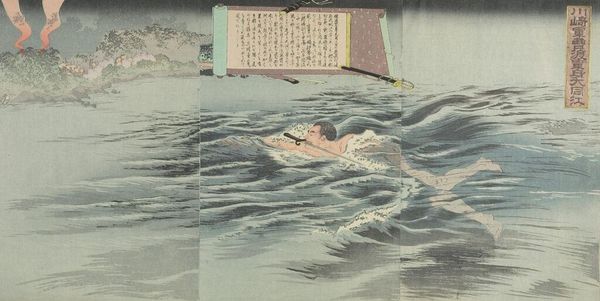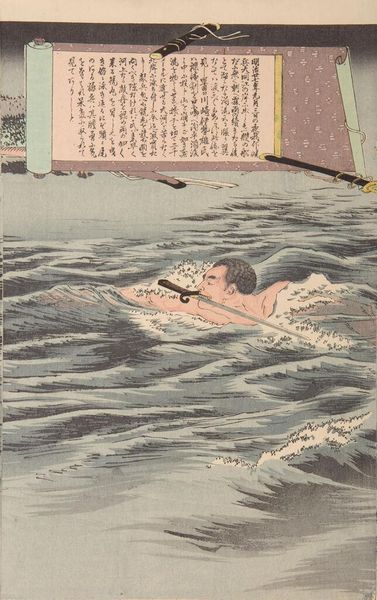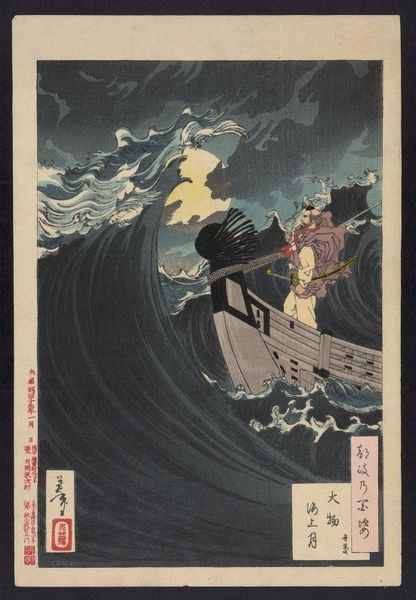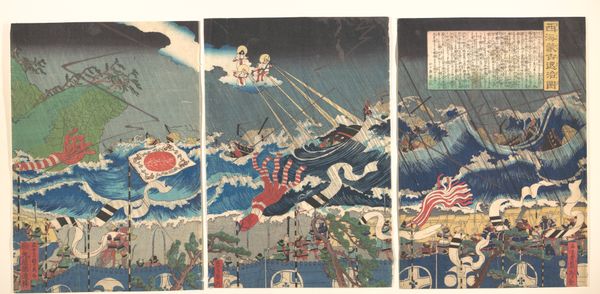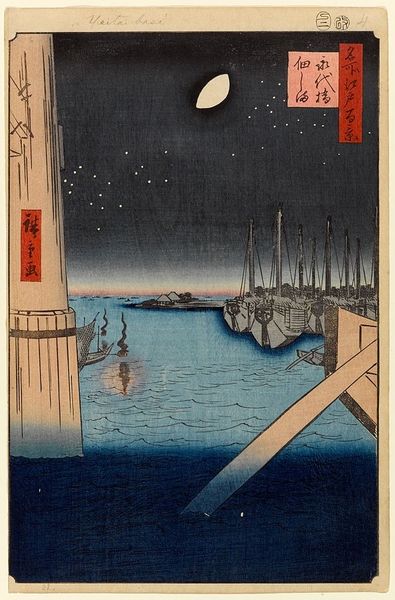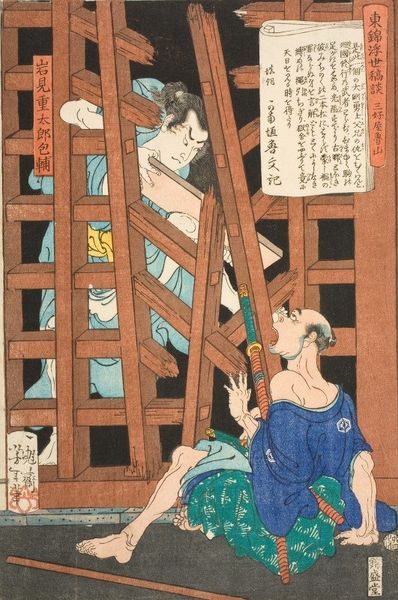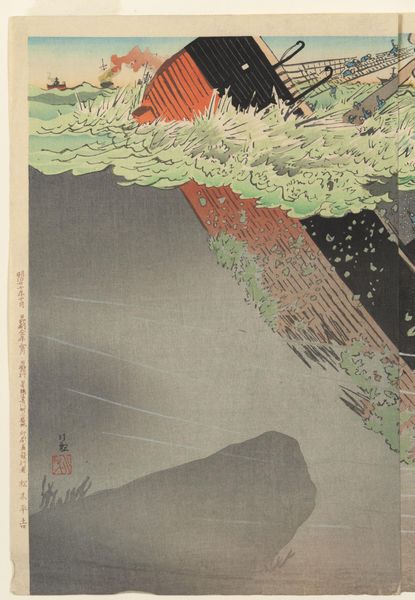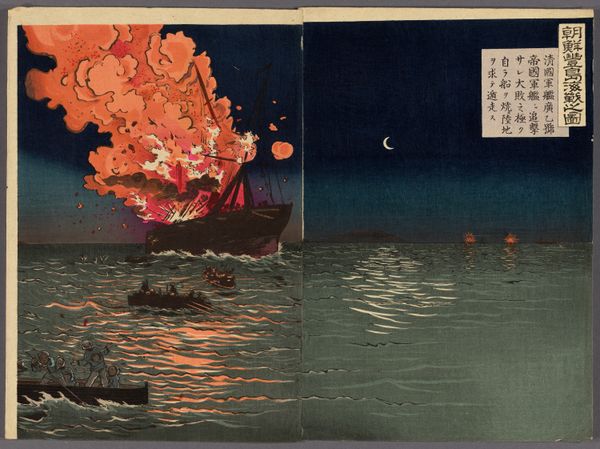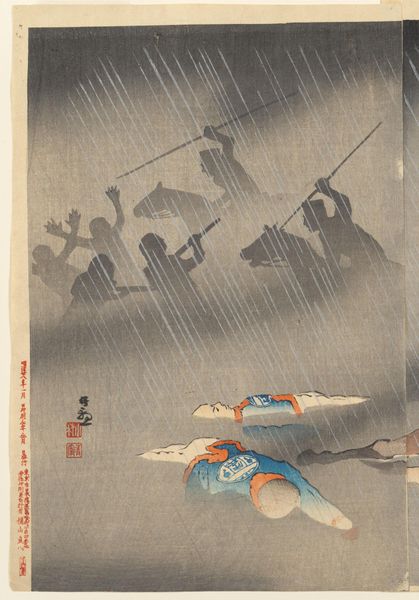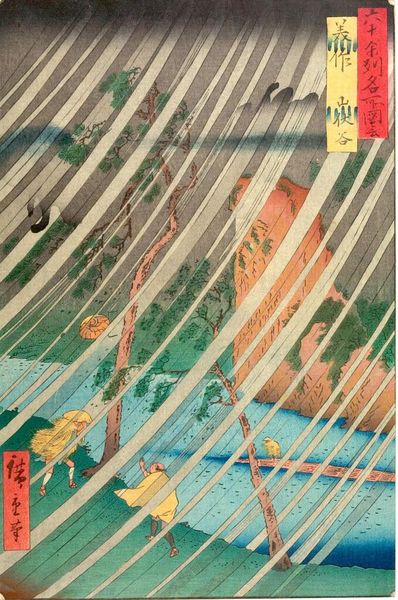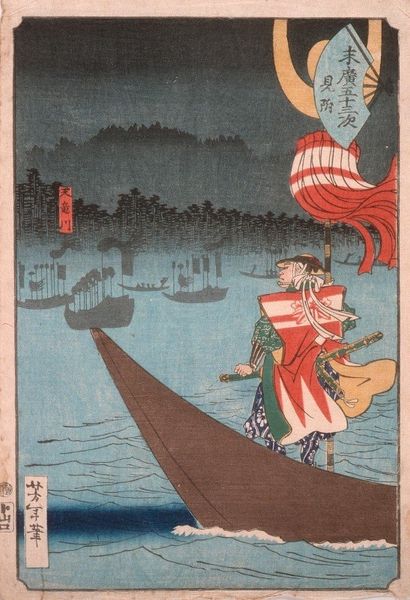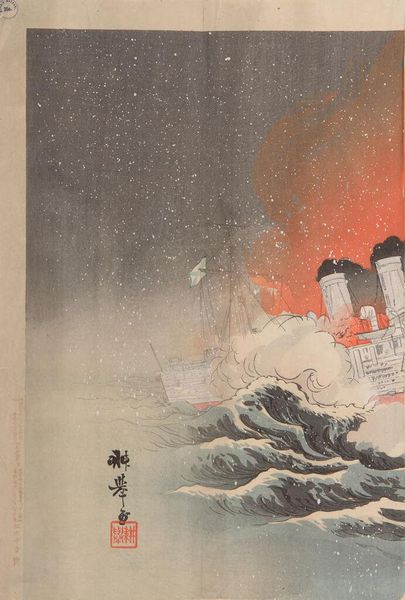
Copyright: Public Domain: Artvee
Editor: This striking image is Tsukioka Yoshitoshi's "Mōri Motonari Attacking Sue Harutaka at Itsukushima," a woodblock print created around 1880. The driving rain almost obscures the figures in boats amidst the darkness, but it really amplifies the drama and sense of foreboding. How do you interpret the use of darkness and light in this work? Curator: The dramatic chiaroscuro—the bold contrast between light and darkness—functions on many levels here. Beyond the obvious visual drama, consider the symbolic weight of darkness in Japanese art and culture. What emotions does darkness evoke in us even now? Editor: Probably fear, uncertainty, maybe even secrecy? Curator: Precisely. And look closely at how Yoshitoshi uses the bright, almost violent pink of the smoke or perhaps flames. In a world depicted through stark monochromatic blocks, it feels unnatural and surreal, a kind of psychological wound erupting into view. Notice also the rhythmic, almost hypnotic quality of the rain itself. Is it merely a background element or is it conveying a message? Editor: So, it is like the downpour is cleansing, yet maybe foreshadowing that something bad is looming at the same time? Also, the men shown as if they’re hiding, the rain concealing their violent action? Curator: Yes, both covering the aggressors but also possibly obscuring something much deeper. Images always work in layered forms like that. The question of history and truth comes up, as narratives get more obscured or revealed depending on how cultures change. Do you see how Yoshitoshi prompts us to look beyond the surface story, past the clash of swords, towards the deeper currents of cultural memory and emotional legacy? Editor: Absolutely! I didn't appreciate how much these symbolic and historical elements contribute to its overall power. Thanks so much.
Comments
No comments
Be the first to comment and join the conversation on the ultimate creative platform.

